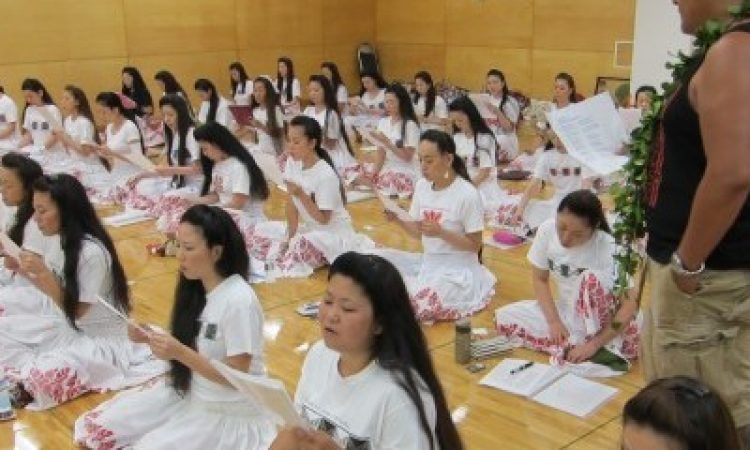“When things go global, more and more control is lost.” I felt Kumu Hula Sonny Ching’s words reverberate through my body with a sense of power and loss.
Director Lisette Marie Flanary’s Tokyo Hula investigates the popularity of hula dance in Japan, a nation with more hula practitioners than the entire population of Hawaii. Featured in the Philadelphia Asian American Film Festival, the documentary captures the nuances of appropriating versus honoring and participating in a culture.
The film left me feeling a sense of saudade, a Portuguese word conveying nostalgia for something that will never happen again. Portuguese writer Manuel de Melo describes this as “a pleasure you suffer, an ailment you enjoy,” and it illuminates how a dance speaks to a past and future. As a Lebanese-American, I have experienced the faces cultural dance can assume (authentic and manufactured alike) and felt pressure within its complex entanglement of appropriated and authentic representations, a theme that envelops the documentary. Tokyo Hula was a welcome acknowledgement of the responsibility, or kuleana, a teacher has in passing their craft on, especially in response to sudden demands brought by shifting world politics post-World War II.
The film establishes the multidimensional facets of teaching hula in Japan. Japan-based Hawaiian teachers, such as Ching, discuss how they have been criticized for “selling the culture to the Japanese.” This is juxtaposed with their admirable desire to respond to Japan’s hula fascination with knowledge, rather than allowing profitable guises to market false illusions of their culture. These teachers maintain hula’s honorability by adhering to a lifestyle that remains true to the genre’s demands rather than yield to the public’s desire for entertainment.
On the other hand, Japanese “Hawaiian-themed” hotels reflect commercialized responses to nationalized interests, creating a fabricated, timeless world in which the social consequences of capitalistic life are temporarily obscured. Fusion genres are used to perpetuate disconnects between dance and culture while enabling inaccuracies. The documentary touches on all this as well as competitions where legitimacy of practice is questioned as Hawaiian natives became minorities in hula competitions, thus giving foreigners the ability to dictate how someone else’s culture behaves.
The debate between how native dances are taught and marketed is nothing new. However, hula’s surge in Japan is a particularly salient example of how foreigners with a strong cultural practice may pay homage to another’s. The dancers in the documentary explain that hula’s embodiment of pure love, empathy, acceptance, healing, balance, and holistic connection to nature comes as a gratifying reminder to a nation that experienced the effects of rapid industrialization at the expense of their native customs. Cultural misalignments are addressed as several Japanese hula dancers discuss the difficulty they’ve had mastering the facial expressions demanded in hula. This serves as a welcome reminder of how marginalized communities are not monolithic and can teach one another.
The documentary does a tremendous job revealing the complexity of hula dance in Japan that is consumed by some recklessly and others respectfully. It made me feel a deep sense of longing for my own dance where authenticity is arguably too distorted to uncover, while simultaneously proud that a culture has been able to maintain its soul where colonialism runs deep. American audiences should watch this documentary as a reminder of the perils of appropriation and the appreciation of what dance can be if we allow it to. As supported by the authentic persistence of hula in Japan, globalization does not necessarily mandate the loss of accuracy. I feel saudade toward so many dances that have become appropriated relics for Western eyes, but more than that I feel pride in hula’s alight spirit. This film is a reminder that expansion can be done responsibly. Dance is much more than a culture. By bringing dance to life rather than mimicking it, we can use globalization for growth rather than profit.
thINKingDANCE last wrote about hula dance in Lisa Kraus’s Once we meet, we’re family: An Asia Pacific Dance Diary.
Tokyo Hula, Philadelphia Asian American Film Festival, online. November 5-15.






